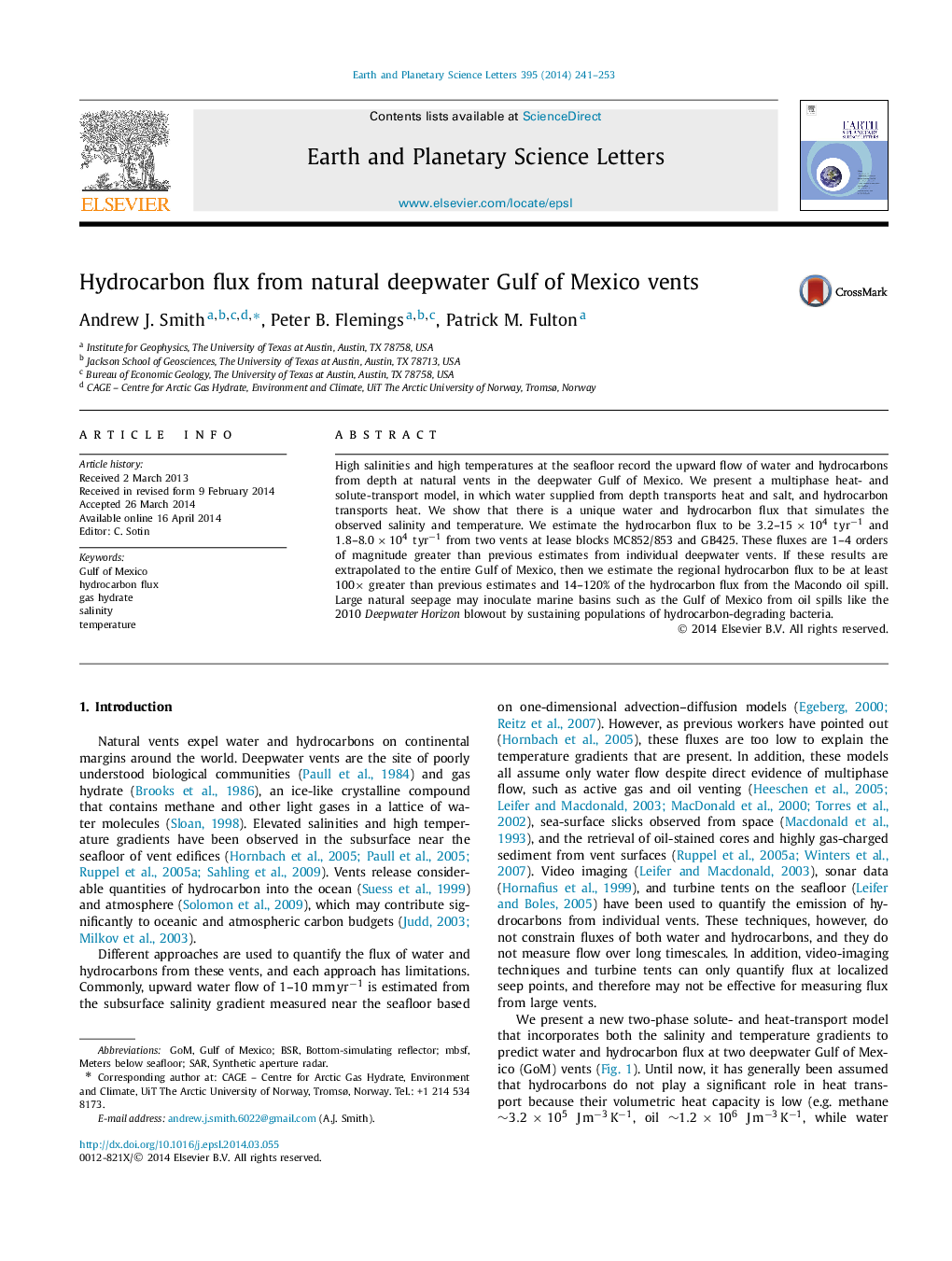| Article ID | Journal | Published Year | Pages | File Type |
|---|---|---|---|---|
| 6429296 | Earth and Planetary Science Letters | 2014 | 13 Pages |
â¢High salinities and temperatures are present at deepwater Gulf of Mexico vents.â¢The upward flow of water and hydrocarbon from depth can explain these observations.â¢New method for estimating hydrocarbon flux from deepwater vents.â¢Hydrocarbon flux into the Gulf of Mexico may be significantly underestimated.
High salinities and high temperatures at the seafloor record the upward flow of water and hydrocarbons from depth at natural vents in the deepwater Gulf of Mexico. We present a multiphase heat- and solute-transport model, in which water supplied from depth transports heat and salt, and hydrocarbon transports heat. We show that there is a unique water and hydrocarbon flux that simulates the observed salinity and temperature. We estimate the hydrocarbon flux to be 3.2-15Ã104tyrâ1 and 1.8-8.0Ã104tyrâ1 from two vents at lease blocks MC852/853 and GB425. These fluxes are 1-4 orders of magnitude greater than previous estimates from individual deepwater vents. If these results are extrapolated to the entire Gulf of Mexico, then we estimate the regional hydrocarbon flux to be at least 100Ã greater than previous estimates and 14-120% of the hydrocarbon flux from the Macondo oil spill. Large natural seepage may inoculate marine basins such as the Gulf of Mexico from oil spills like the 2010 Deepwater Horizon blowout by sustaining populations of hydrocarbon-degrading bacteria.
